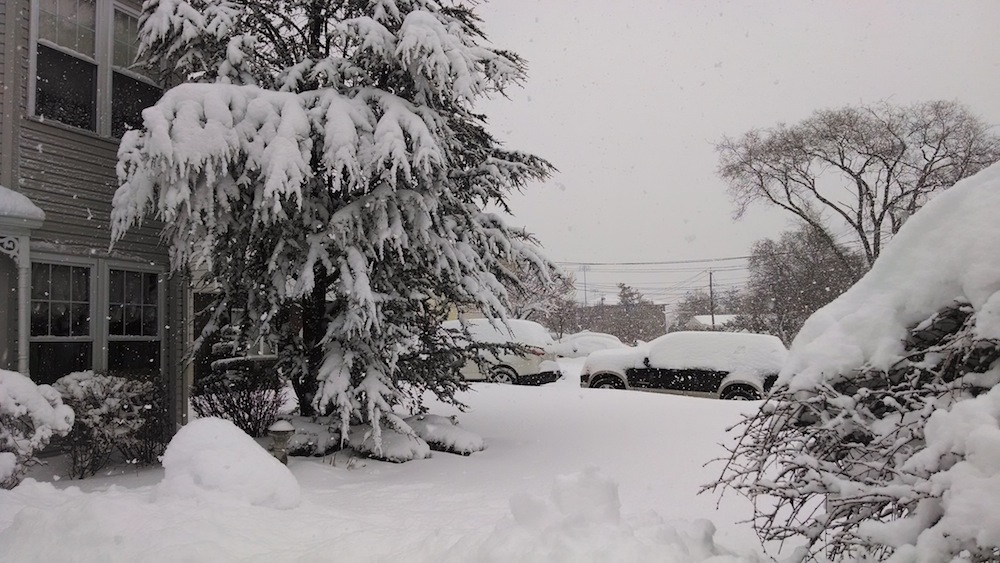
WTF Weather? Wild Meteorology Words Go Mainstream (Op-Ed)

Melissa Mahony is a senior editor at OnEarth.org, published by the Natural Resources Defense Council. This article was originally published by OnEarth magazine. Mahony contributed this article to Live Science's Expert Voices: Op-Ed & Insights.
The "polar vortex" that froze North America in its tracks isn't exactly new. Cyclones of frigid air swirl around the Arctic all the time. What's different is that this latest polar vortex dipped far enough south to send Floridians scrambling for their mittens.
The term also showed up all over my Facebook feed. Granted, I run with a lot of science journalists, but this time even my let's-take-a-picture-of-my-breakfast friends (no offense, guys) were discussing the rare and strange interaction of the polar vortex with the jet stream and its possible relation to melting Arctic sea ice … driven by climate change.
Thanks to wacky weather (and social media hashtags), meteorology geekspeak has hit the mainstream. Once obscure atmospheric patterns are now thrown into everyday conversations with only the slightest hesitation to make sure "derecho " is pronounced correctly. As global warming ("global weirding," anyone?) primes the planet for even more extreme weather, expect to encounter more lab-coat lingo and science slang in your everyday life. Here's a crib sheet for the climapocalypse.
Blocking pattern
Wow, the jet stream sure is curvy — possibly as a result of a warming Arctic — but don't let its good looks fool you. During a blocking pattern, the jet stream is slow, boring and prevents other weather patterns from getting on with their lives. So when it rains, it pours … for days, as it did in Colorado last September. Derecho If you pronounce this one right on your first try, those high-school Spanish classes are paying off. "Derecho" means "straight," as in a straight line of fast-moving thunderstorms that is beautifully terrifying, like the one from June 2012. That devastating derecho left 23 people dead and more than 4 million people without electricity between Illinois and Washington, DC. Derechos are also known as "land hurricanes." Firenado/Firewhirl
When convection heat rises off a wildfire (which are becoming more common due to climate change) and begins sucking and swirling in towers of flames, a "fire tornado" can occur. A huge one occurred last August during Alaska's Tetlin Junction Fire.

Flash freeze
Somebody get Lake Michigan a hot toddy. During the recent polar vortex, when temperatures dropped as much as 50 degrees in a matter of hours, cities from Ontario to northern Georgia issued flash freeze warnings.
Frost quake
Sugary breakfast cereal? Nope. Also known as cryoseisms, these usually innocuous "ice quakes" occur when water penetrates soil or rock formations, freezes, and then rapidly expands, as it did in Canada this week. Pressure builds up underground and then ... BOOM!
Haboob
Haboob is a Sudanese word for sandstorm, but could be an American word for "go inside right now!" Haboobs are dry microbursts that occur during drought conditions and bring a wall of dirt, dust and sand with them. You know how much it sucks to get sand in your iPhone at the beach? A haboob's like that but covers everything. One recent sandstorm was 100 miles long and hit Phoenix at 60 mph. Heat burst
Did you know it can actually rain heat? When a mass of dry air plummets toward the ground during a weakening thunderstorm and compresses, a sudden, dramatic increase in temperature can occur — along with some very strong, hot winds. During a 2011 heat burst in Wichita, Kansas, the mercury rose from 85 to 102 degrees in 20 minutes. Megafire
Exactly what it sounds like: a massive wildfire. Drought conditions due to global warming are making them more common across the globe.
Snow drought
A ski resort's worst nightmare, when a lack of precipitation during winter months shrinks the snowpack and makes skiers and snowboarders cry into their cocoa. It's not fun for farmers, either. Less snow in winter means less meltwater for agriculture and aquifers come spring.
Polar vortex
After the recent #DeepFreeze media blast, you should be a pro on polar vortices by now. If not, click here.
Bonus points: Ice balls
Hey, Lake Superior ... duck! Looks like Lake Michigan's preparing for a massive snowball fight.
Follow Melissa Mahony @mahony128. This article first appeared as "WTF, Weather?" on OnEarth.org. The views expressed are those of the author and do not necessarily reflect the views of the publisher. This version of the article was originally published on Live Science.
Sign up for the Live Science daily newsletter now
Get the world’s most fascinating discoveries delivered straight to your inbox.











